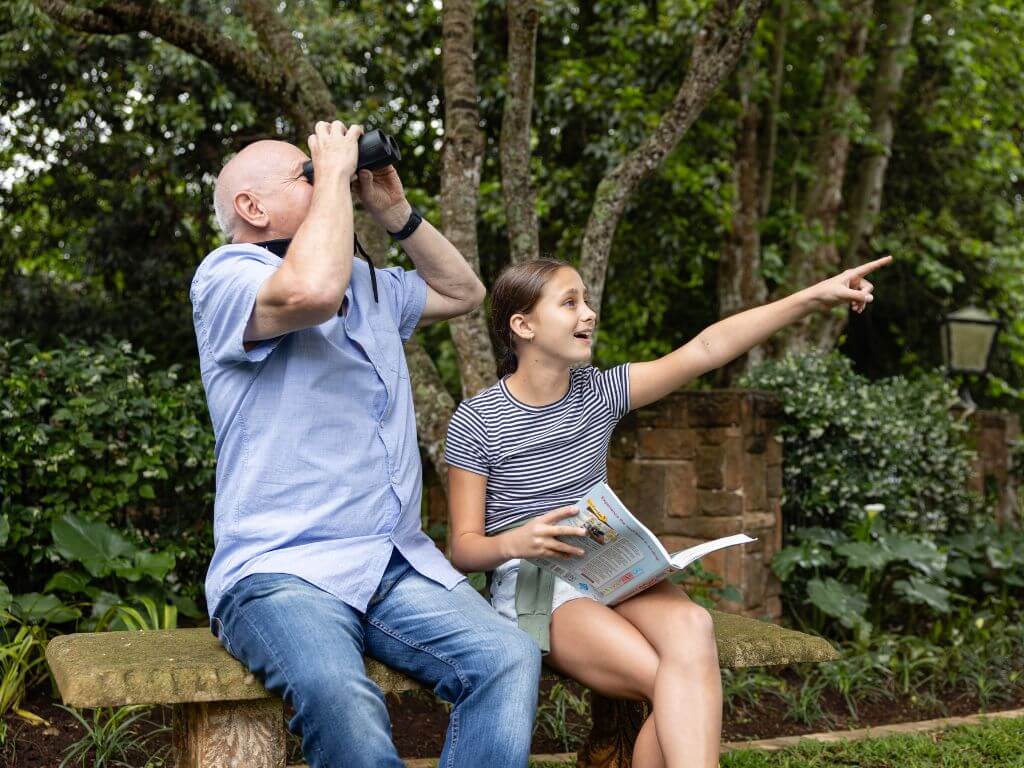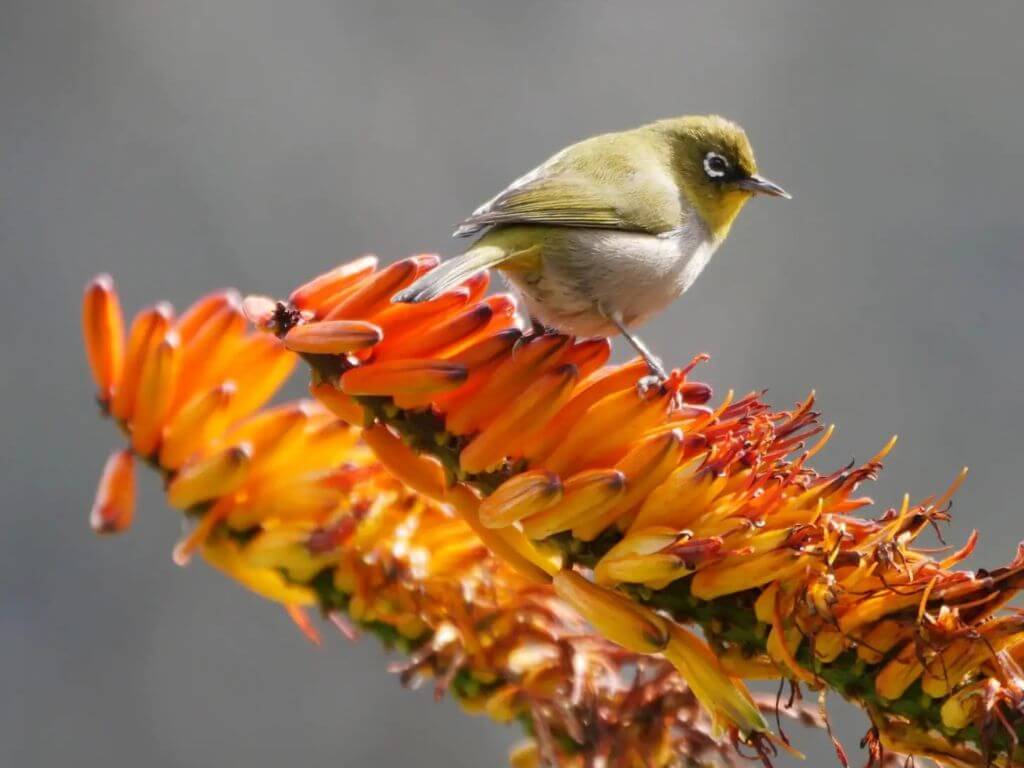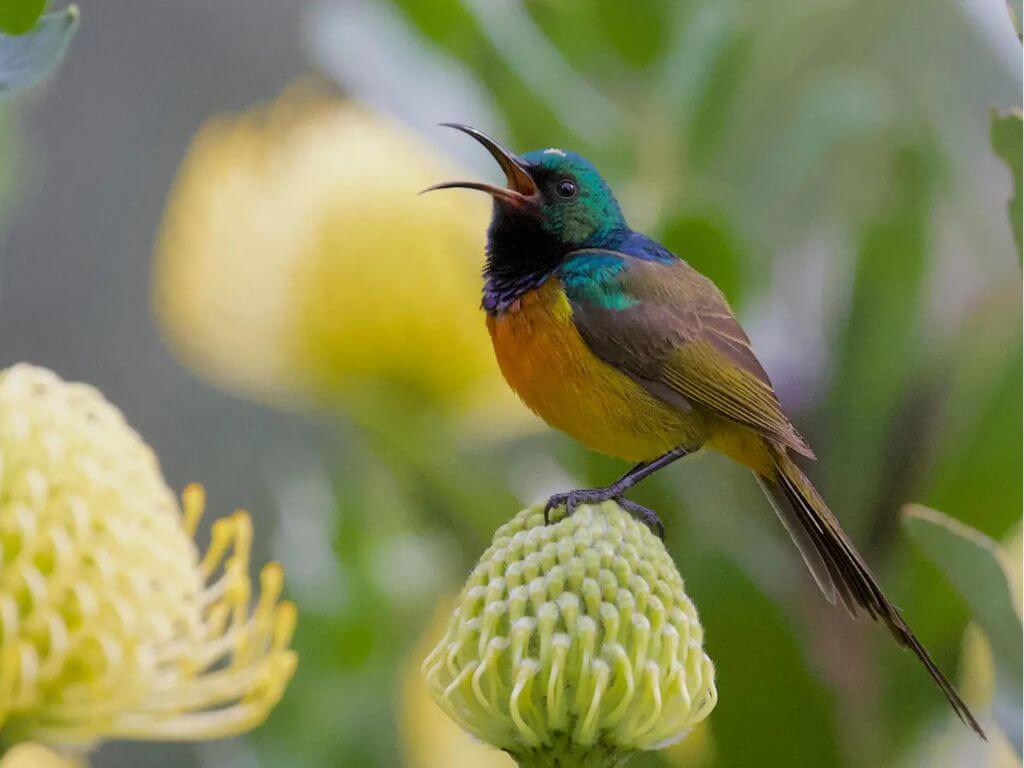So, you’ve heard a hadeda scream, spotted a Cape Robin-Chat hopping through your garden, and now you’re wondering… could I be a birder? The answer is yes. And this beginner birding blog will help you get started.

Where to start when birding
Birding doesn’t need to be serious or complicated. It can be as simple as looking out your kitchen window or sitting under a tree with a cup of tea. Start by observing the birds already around you. What do they look like? What are they eating? Are they singing, hopping, flying solo or in flocks? Beginner birding is about noticing the little things and being present.
Did you know…The best time to spot birds is early morning when they are most active.

Gear: What you really need
You don’t need fancy gear to begin. In fact, here’s your starter kit:
- Your eyes and ears – observation is your superpower.
- A notebook or notes app – jot down what you see.
- Binoculars (optional, but helpful)
- A birding app (we’ll get to that below)
- Fancy camera? Not necessary.
- Expensive field guides? Nice, but not essential.
Start simple and build as you go.
Did you know…Binoculars aren’t a must. Start by watching with the naked eye.

Skills: What makes a good birder?
Patience, curiosity and a bit of quiet. Learning bird calls, watching behaviour, and getting to know local plants and trees all come with time. You don’t need to memorise 800 species. Just enjoy the process.
Beginner birding is all about learning to:
- Spot perching behaviour – Birds like weavers, robins and sunbirds often perch and are easier to observe.
- Notice flight pattern – Is it a smooth glide like a raptor or a bouncy flutter like a bulbul?
- Identify colour – Bright yellows, greens and iridescent blues can help you narrow it down.
- Gauge size and wingspan – From small white-eyes to larger birds like hadedas and hornbills.
- Recognise calls and songs – Some birds are easier to hear than see. Try learning one or two common calls to begin.
Did you know…Planting aloe, wild fig, or Cape honeysuckle will attract nectar-loving birds like sunbirds.
Once you’re out there, knowing who’s who is key. Learn how to ID common South African birds.

Resources
Our favourite birding apps
Birding apps range from free to paid, and even the free versions can take your birding to the next level. Try a few and see what fits your style. Here are our favourites:
- Sasol eBirds of Southern Africa – A comprehensive guide with calls and info on 950+ species.
- Roberts Bird Guide – For serious birders wanting depth and detail.
- BirdLasser – Great for logging sightings and contributing to conservation.
- Firefinch – Gorgeous illustrations and rich detail.
- BirdPro – Easy to use with a smart search feature.
Book recommendations
Looking for a beginner-friendly bird book? Try the Sasol Birds of Southern Africa field guide. It’s clear, accessible and widely used in South Africa. Great for garden birders and weekend explorers alike.

How bird names work
Birds in South Africa usually have both a common name and a scientific name (Latin). For example:
- Cape Robin-Chat – Cossypha caffra
- Piet-my-vrou – another name for the Red-chested Cuckoo
Some birds also have local or Afrikaans names, and many have affectionate nicknames based on their call or appearance. This can make it confusing but also adds to the fun. Over time, you’ll learn which names are used in different areas and which birds are commonly referred to by nickname or regional terms.
Location: Where to bird?
Anywhere. That’s the beauty of it.
- Your garden or balcony
- Local parks and nature reserves
- Wetlands, forests, coastlines
Beginner birding can start in the simplest places:
- Weavers building hanging nests in suburban trees
- Sunbirds darting between flowers
- Fiscal Shrikes perched like tiny guards
- Piet-my-vrous calling in summer
- Guinea fowls strutting like garden security
Did you know…Guinea fowls may look cute, but they will outrun you if you try to catch them.

Food: What to feed birds
Feeding birds is a great way to invite them closer:
- Seed mix for doves, sparrows, finches
- Fruit (like apple or banana slices) for white-eyes and barbets
- Suet balls or suet snacks for insect-eating birds
- Mealworms for robins and thrushes
- Peanut butter and toilet roll feeders (yes, really!) for garden birds
Beginner birding tip: Keep your feeders clean and refill regularly to keep your garden full of happy birds.
Did you know…A simple bird feeder with seeds or fruit can bring more birds to your yard.
Got birds visiting your garden? Make it even more inviting with the right feeders.

Community: You’re not alone
Birding is better together. Whether you’re a total newbie or seasoned spotter, there are welcoming groups like the Bird Life South Africa Listers’ Club ready to share their knowledge.
Facebook groups like:
- BirdLife South Africa
- Simply Birding
- Let’s Go Birding South Africa
- And many more!
They are great for asking questions, sharing sightings and feeling part of something bigger.
Want to learn more about the joy of birding? Read more in our backyard birding blog.

Did you know…Birding is easier than you think.
Start small, stay curious and enjoy the joy of beginner birding. Whether it’s the hadeda’s morning alarm or a sunbird sipping from your aloe, birds are everywhere. You just need to notice them. To make your beginner birding experience even better, try starting with Westerman’s wild bird seed, suet snacks, seed bells and easy-to-hang feeders. You’ll be amazed at who stops by for a visit. Follow our socials, join our community and let’s go birding together.